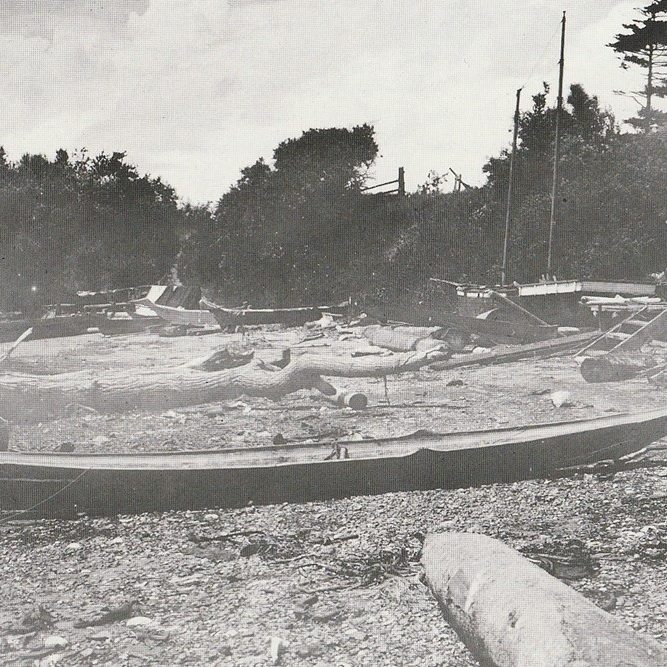Songhees Walkway Pocket Beach
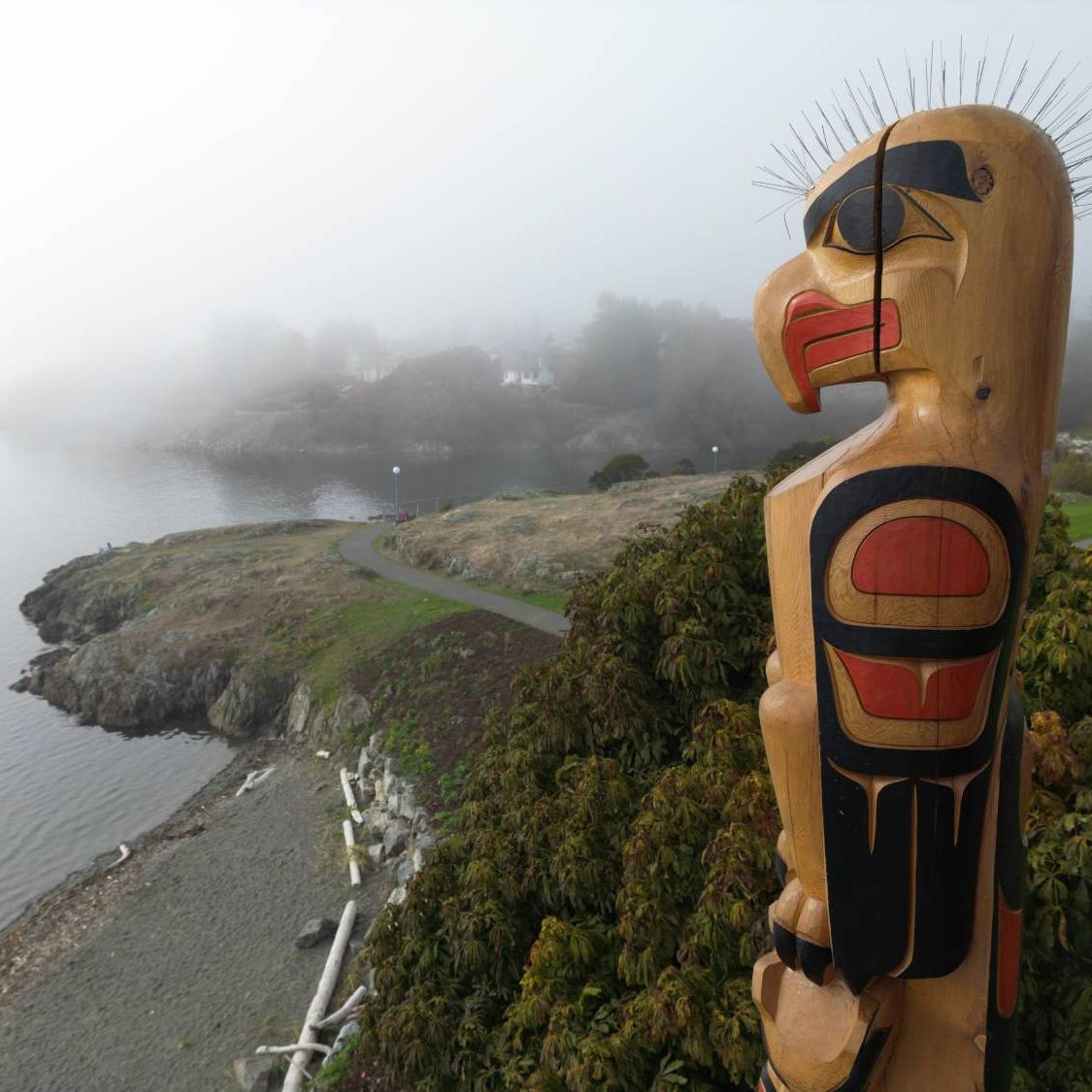
Established as part of the Songhees Reserve in 1853-1911, the site saw bustling activity as lək̓ʷəŋən residents and visiting families camped on the beaches, engaging in local fishing, cannery, and trading activities. However, the landscape changed dramatically in the 1930s with extensive filling of Lime Bay and Mud Bay for harbour development and industries, leaving behind a significantly altered remnant of its once expansive cultural and ecological significance.
The restoration project's historical review reveals layers of cultural heritage buried beneath industrial endeavours. However, with a keen focus on reclaiming both the ecological and cultural values of the site, we embarked on a journey to revive this vital piece of history.
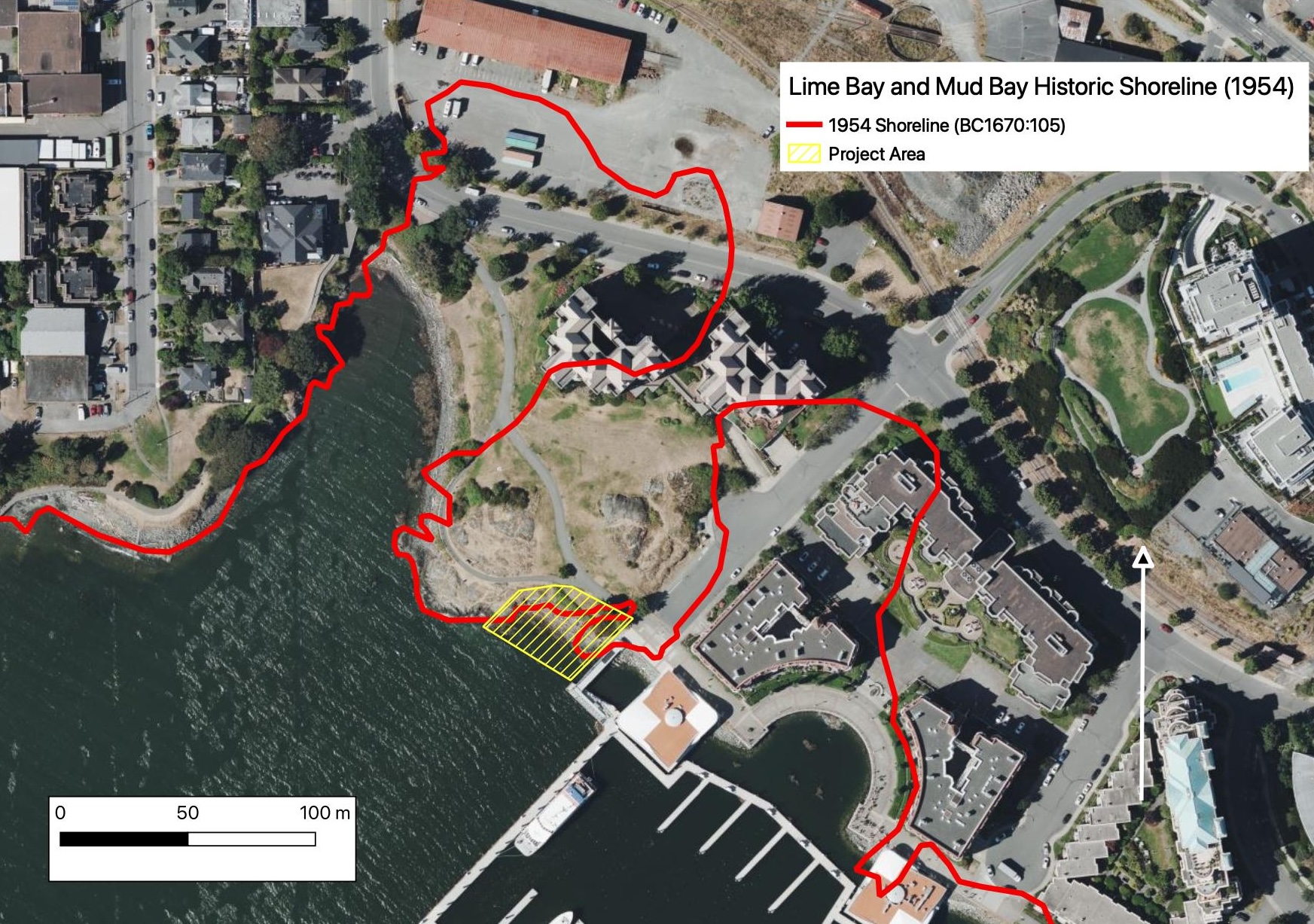
The Songhees Walkway Pocket Beach Restoration Project is a testament to the power of partnership and the importance of restoring the culturally and ecologically significant shorelines around us.
This project serves as a key demonstration site for Green Shores for Shoreline Development and its principles of restoring physical processes, enhancing shoreline habitat, reducing pollution, and reducing cumulative impacts on shoreline environments through nature-based solutions, rather than traditional engineering approaches. It is also a part of our commitment to the call of the UN Decade on Ecosystem Restoration (2021-2030), which aims to protect and revive ecosystems around the world, for the benefit of people and nature.
The Songhees Walkway Pocket Beach, lying in what was recently announced as one of the most polluted coastal waterways in the country, holds significant cultural importance within the traditional territories of the lək̓ʷəŋən (Lekwungen) People, known today as Songhees and Esquimalt Nations. Once a bustling hub of cultural activities, it was a place where guests were warmly welcomed in the traditional Salish manner. This area was vital for launching and landing traditional watercraft, such as Western red cedar dugout canoes, owing to its sheltered and productive shorelines. Teeming with thriving kelp forests, shellfish communities, and eelgrass meadows, it was an ideal spawning ground for forage fish like Pacific herring, Pacific sand lance, and surf smelt.
"It was a gathering place for First Nations visitors from up and down the coast who came for many reasons: to participate in memorial, marriage, gift-giving and naming ceremonies; to trade goods; and to work for wages in the growing city of Victoria.”
Restoration Work
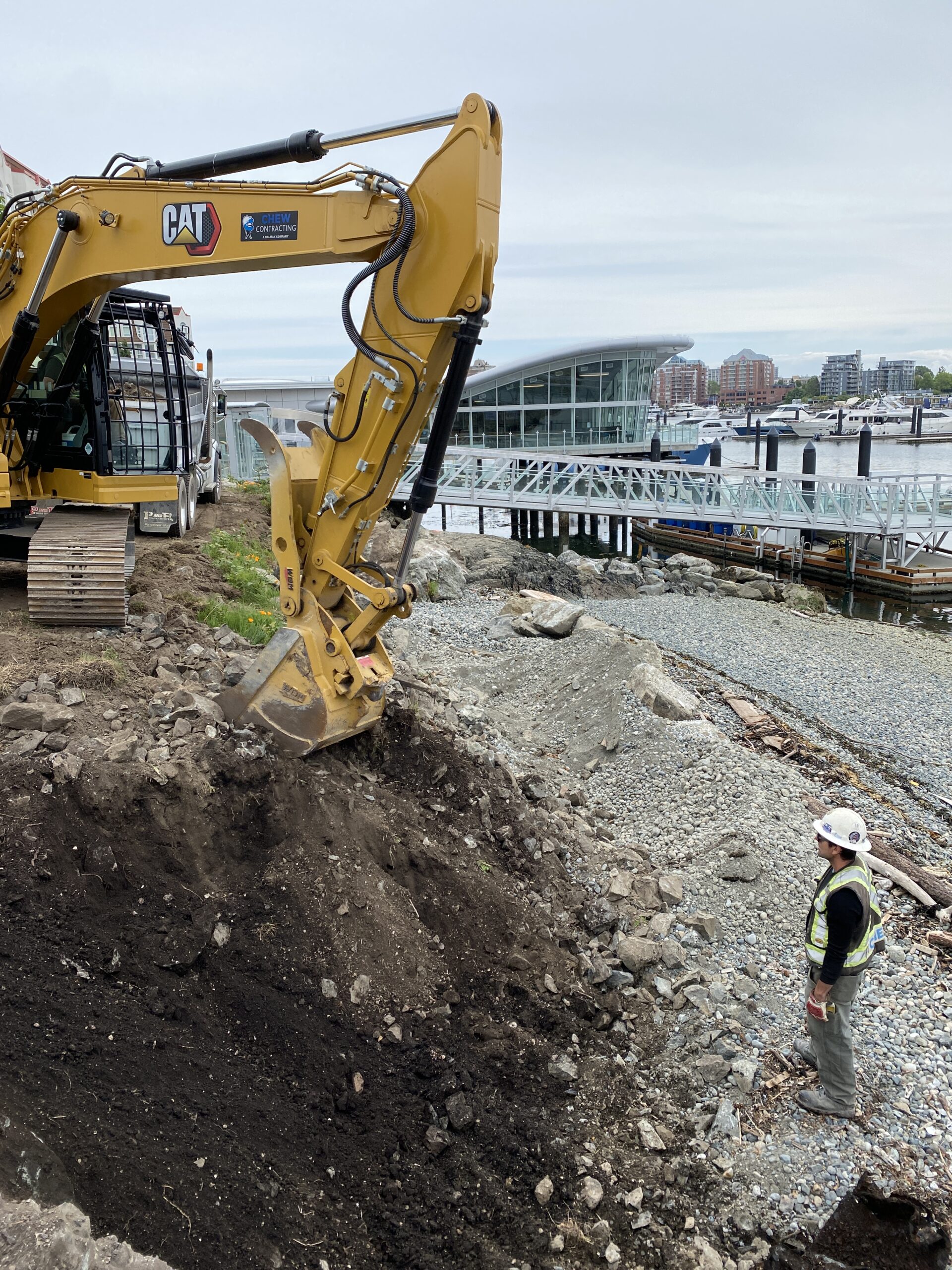
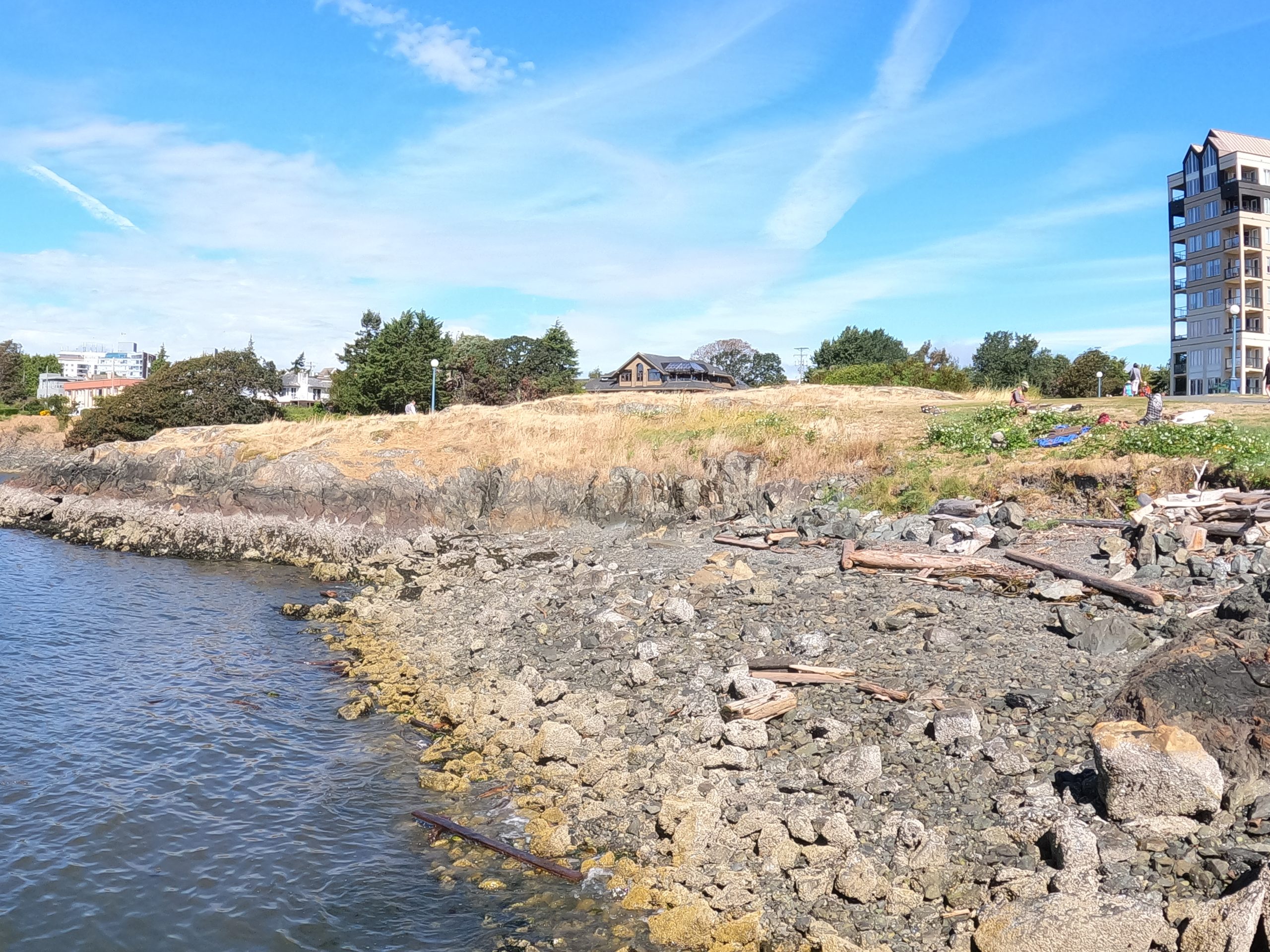
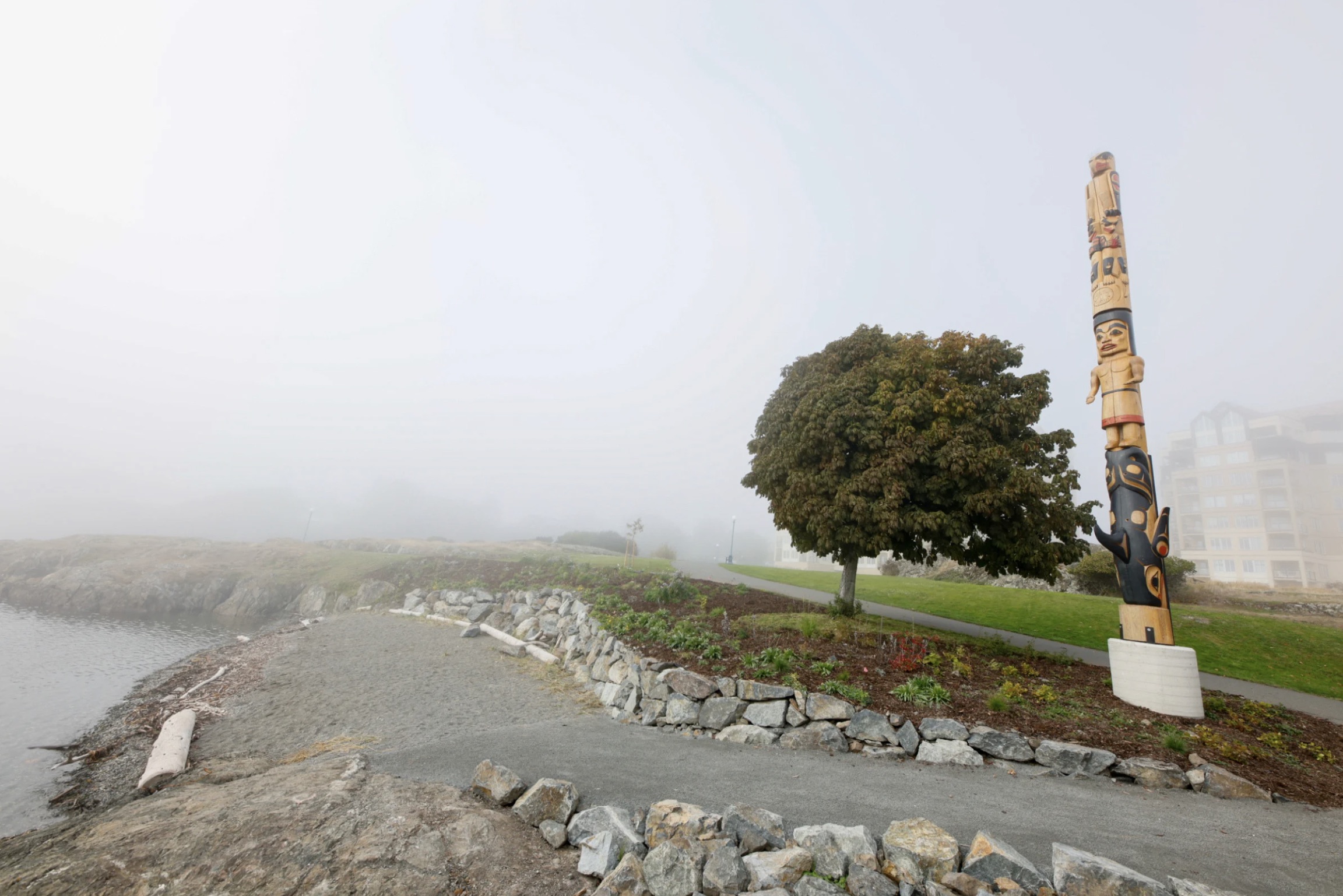
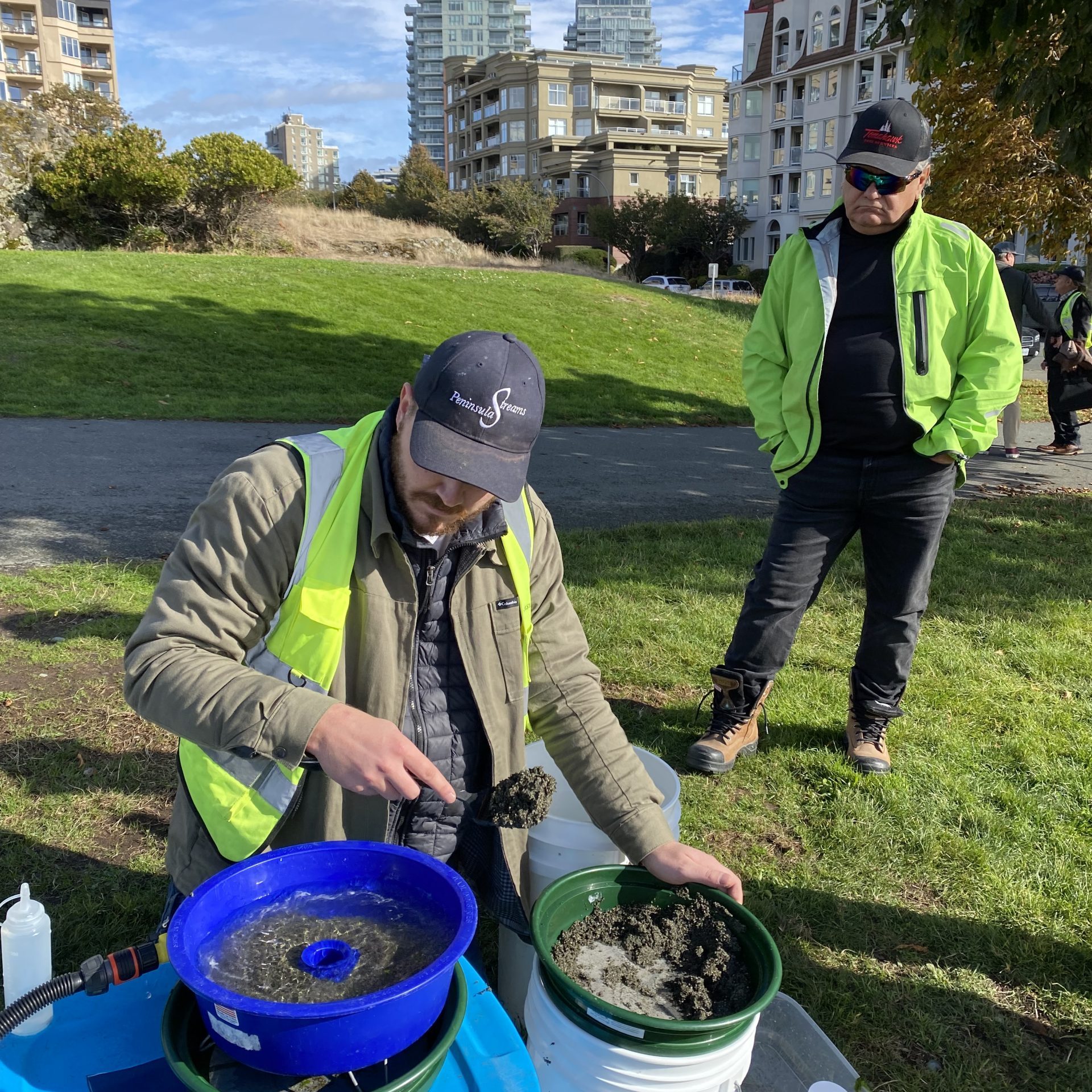
This project is more than just restoration; it's a way to share and promote the rich Indigenous history and use of this important cultural heritage site. It is also a testament to the effectiveness of nature-based solutions in the Salish Sea. Located at the heart of an urban centre and supported by local and regional ENGOs, this endeavour showcases the power of shoreline enhancement in the Salish Sea.
But the benefits don't stop there! By restoring marine riparian vegetation, we're fostering connectivity for other backshore areas of ecological significance and creating a haven for pollinating insects and birds right within the city limits. With signage installation and stewardship opportunities, this project empowers residents of the City of Victoria, the Songhees Nation, and the Esquimalt Nation to engage with and protect this vital cultural and ecological site.
"This project is a great demonstration of how soft shore and hybrid approaches to shoreline protection can provide opportunities to increase ecological and cultural values to a site."
— Kyle Armstrong, PSS Executive Director
Learn More
Scroll through or click to view this story map created by UVic Community Mapping showcasing our Songhees Walkway Pocket Beach restoration.
News
Resources
Project Partners


